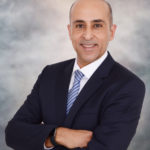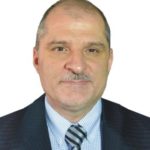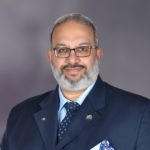Saudi Arabia is undergoing a transformation, largely driven by government initiatives under Saudi Vision 2030 to promote social and economic diversification within the Kingdom. These initiatives have renewed the enthusiasm of the HVAC sector, with stakeholders presenting a positive outlook of the local market in anticipation of new developments, following the announcements of mega projects and increased investment in non-oil industries, and in view of the expanding retrofit market. Hannah Jo Uy of Climate Control Middle East takes a closer look at how efforts to meet the objectives of Saudi Vision 2030 is transforming the built -environment in the country…
Saudi Arabia is undergoing a transformation, in more ways than one. In fact, Ahmad Farrakh Manzoor, Head – Smart Infrastructure (Solutions and Services), Siemens Saudi Arabia and Bahrain, describes the changes within the Kingdom as “unprecedented”. “From the airports’ e-gates, an excellent welcome experience with much shorter waiting times, all the way to women driving, restaurant and family entertainment experiences, smarter infrastructure, metros – these trends confirm the massive change in the Kingdom,” he says. Manzoor is not alone in this observation.

Ahmad Farrakh Manzoor
Khaled Al Mulhim, Business Development Director, Suhaimi Design – Protecooling, says: “The market is changing, as we speak, and I think the speed is really exhilarating. Compared to previous years, I believe things are going in the right direction.” Matthias Kasprowicz, Managing Director, TROX Middle East (LLC), shares the same positive view with regard to Saudi Arabia’s market. “After a couple of quite difficult years in Saudi, we see an uptrend since end of last year,” he says. Dana Salbak, Associate, JLL MENA, points out that the positive attitude surrounding Saudi Arabia’s business environment can be attributed to the government’s comprehensive strategy to drive the economy towards Vision 2030, which has led to an allocation of SAR 1.1 trillion for government spending in 2019. Salbak says a significant portion of the figure will be directed towards the non-oil sector, of which the real estate industry is a part.
Key areas of growth

Matthias Kasprowicz
Kasprowicz says that besides the mega project, Riyadh Metro, which the company has significantly contributed to, a number of projects are gaining momentum once again. “Generally we see growth potential in all areas where the demographic development in Saudi has impact, such as education, healthcare, infrastructure, and food and beverage.” Kasprowicz says there is especially strong momentum in the entertainment industry. Salbak is in agreement, pointing out that that changing lifestyles and growing diversity of the residents will continue to fuel the entertainment sector, especially given that in Saudi Arabia’s population of over 30 million, 60-65% are under the age of 30.

Dana Salbak
In view of the youth population in the Kingdom, Manzoor says there is a strong market for cinemas, which is only expected to grow in the foreseeable future. He says: “Many theatre development projects are either underway or in the planning phase. Some will be built as part of existing and new shopping malls, while others will be separate.” Ziad Al Bawaliz, Regional President, Danfoss Turkey Middle East and Africa, echoes this, sharing that there is a 95% occupancy rate in all theatres, which shows no signs of slowing down. Salbak adds that the government has already signed agreements with various cinema operators to come and open cinemas and multiplexes, which will reflect positively on the retail market.

Ziad Al Bawaliz
Al Bawaliz says the government has also set out many initiatives to support the media business, including incentives for production and the building of a media city. “We do not know if this initiative has created a physical construction increase, specifically of new malls,” he says. “However, it has created construction buildout within current malls and larger construction of infrastructure related to the entertainment business. There are still a lot of moving parts that are being worked out on the government regulations and budgets, which remain unclear.”
In addition to the growing entertainment industry driving projects, Al Bawaliz says tourism is a key growth sector. “This is reiterated not only with the government’s big focus on Umra and Hajj but also through all the mega-projects under development, such as Neom, Amaala and the Red Sea Project,” he says. Salbak adds that these mega-projects also showcase the country’s move to not only increase tourism numbers but also to diversify the tourist base by attracting the MICE sector. “We see this in the huge announcement of new wellness destinations, as part of the portfolio launched by the Public Investment Fund (PIF) alongside NEOM and Red Sea,” she says.
There is a similar movement in transforming the residential sector. Salbak points to the SAR 86 billion (USD 23 billion) project, announced earlier this year, to revamp public spaces in Riyadh, in a bid to improve the quality of life of residents in the city. “The King Salman Park will promote urban development with green spaces and will include recreational areas for the benefit of the communities and citizens in Riyadh,” she says, adding that the project complements government initiatives to boost home ownership, which is expected to promote demand for residential units in the long run.
Al Bawaliz says the same push can be seen in support of local manufacturing industries. He says: “The government is launching several initiatives and subsidised programmes to support local manufacturing of the auto industry; food processing, including aquaculture; healthcare; renewable energy; water; transport; logistics and mining. These are clear growth opportunities for Danfoss across all the segments.” He adds that Danfoss has observed an increase in projects for water and wastewater infrastructure along with desalination. Salbak says that a lot of investment is also being directed towards the logistics sector as well as in the development of industrial facilities, given that the manufacturing sector is becoming a huge driver for the economy.

Numair Alamdar
Al Bawaliz says the mood is certainly more optimistic, but that it will be later in 2019 or 2020 before the industry sees a real uptake in order booking. Numair Alamdar, an independent consultant, is in agreement, saying the Kingdom continues to be the largest market in terms of volume. “The major boom of the economy is really based on the government,” he says, “but right now, it’s on pause. After maybe in one or two years, the new projects will come, the money injection will be good and people will start to be refreshed.”
As stakeholders continue to eagerly await tenders for the new developments, Alamdar points out that there is still a huge opportunity in the field of building-retrofits. “For the time being, the most popular projects are rehabilitation projects,” he says. “Many buildings want to change their air conditioning, which has been used for 20 years, and to change because of the high cost of energy now.”
Shifting product demands
While new developments and existing buildings are creating a pipeline of projects for stakeholders, the question then shifts to what type of products these projects will create a demand for. Al Mulhim points out that there is growing emphasis being placed on energy-efficient products, especially in the growing retrofit sector. This trend, he says, can be observed in government and commercial facilities that are energy intensive, as well as in the private sector, with many developments pursuing retrofits in a bid to improve the bottom line by enhancing performance and reducing operational cost to add value to total revenues. Alamdar says the growing appreciation for energy-efficient products in the past 2-3 years is largely driven by increasing energy rates, pointing out that electricity cost has more than doubled from SAR 0.1 to today’s SAR 0.3 (per kilowatt/Hr), as part of government efforts to drive a change in behaviour. Al Bawaliz adds: “Years of subsidised utility costs and absence of public incentives to conserve energy have led to considerable waste, loss and overuse of electricity. We believe that KSA aims to break old habits by increasing energy tariffs, retrofitting ageing public facilities, establishing awareness campaigns, developing energy-efficient solutions and introducing regulatory bodies that support and enforce the above.” Highlighting the impact the new standards will have on homes and businesses, Al Bawaliz says the Saudi government has established dedicated entities to oversee the development and regulation of the energy-savings sector as part of its commitment to Vision 2030. “The Saudi Energy Efficiency Center (SEEC), Super Energy Service Company (Super ESCO) and Energy Service Company (ESCO) Committee have been tasked with introducing new regulations and energy standards in the forms of licensing, measurement and verification systems, legal frameworks and incentive programmes,” he says, adding that Danfoss is closely working with these multiple stakeholders.
Kasprowicz says that TROX has also seen a change in terms of increased appreciation for quality products and demand for high performance, not only for energy but for an overall healthier built-environment. “I think customers are tired of going cheap and paying the bill of that over the many lifetime years of the building where they have to live with bad HVAC performance,” he says. “People are realising more and more that a noisy and draughty AC, which impacts your health, performance, wellbeing and mood, must not be accepted. People get more conscious about the impact of healthy air and a properly engineered AC system. But it is still a long way to go to reach a quality level, which we have, for instance, in Europe.”
Need for training
That said, many stakeholders believe there is still room for improvement, which can only be achieved through training and knowledge exchange. Kasprowicz says this is especially important in efforts to veer away from cost-centric thinking, which continues to be a big driver for the majority of the market. He says: “We must take the consultants into responsibility and request that they educate their customers and building owners about the impact of low cost compared to a acceptable level of indoor comfort, energy saving and lifecycle cost, including maintenance, energy and downtime calculations. We are joining hands with them in this educational approach.”
Al Bawaliz echoes the need for training, pointing out that entities will be investing in human capital through certifications and training programmes aimed at building capabilities in the energy sector. Alamdar adds that the market also remains largely geared towards traditional equipment and that applications, such as District Cooling, are not very popular in the country. “Private sector owners are not willing to have some supply of cooling only without machinery,” he says. “They are used to having ownership of machinery. It’s a little bit difficult to shift their mind from this mentality.” While it will take time for the market to accept District Cooling, he says, VRF technology is increasingly gaining in popularity in the country.

Xavier Delaigue
Xavier Delaigue, EMEA Sales Director, Seeley International Europe, Middle East & Africa, says the company has a commitment to training local stakeholders on the benefits of, in its case, evaporative cooling, especially following the success of the company’s Mina Tent City project. “Our goal is to take a bigger market share of what already exists and see the market evolving into the use of better quality products and better performance products,” he says.

Dr Ahmed Ala’a Eldin Mohamed
Dr Ahmed Ala’a Eldin Mohamed, Director, Region At Large, ASHRAE, believes that local stakeholders are more than willing to expand their knowledge, gleaning from recent technical seminars ASHRAE conducted with Siemens in Riyadh and Jeddah. “I saw the people there eager to learn and to get the knowledge,” he says, adding that the decision to conduct the seminars was owing to demand and that stakeholders must promote best practice, especially in view of the pipeline of projects in the country. Manzoor adds: “Hydronic balancing systems keep evolving, and the latest technologies substantially reduce installation and energy costs. We consider it as our obligation as an industry leader to create awareness, especially among the industry’s decision-makers, in the design of projects. We have conducted seminars in those locations where we see good potential in the next few years, which is confirmed in the extensive project pipeline in Saudi Arabia and other countries in the region.”
Undoubtedly, Saudi Arabia is shifting gears, with Al Mulhim pointing out that it is no longer “business as usual” in the Kingdom. Such changes are working in favour of local, regional and international players, who are being given the chance to play an active role in making Saudi Vision 2030 a reality.
Copyright © 2006-2025 - CPI Industry. All rights reserved.